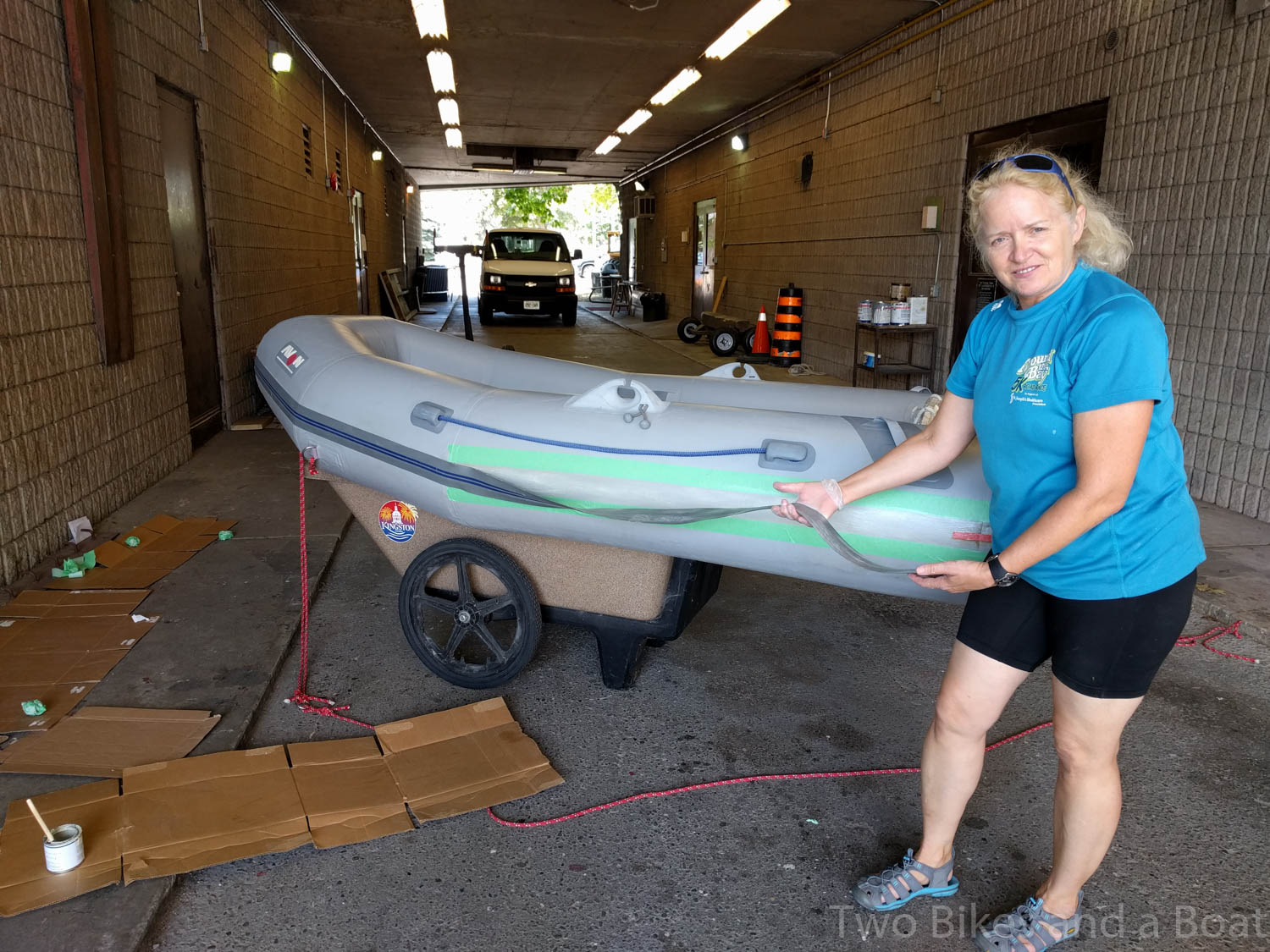Our family car is about to be sold, we are replacing it with a Rover, but not the type with wheels. Kinship came with an Avon Rover R2.81 roll up dinghy with a Nissan 5hp outboard engine.
A dinghy is an important link to the shore and to other boats. We will use it for shopping, social calls and sightseeing ashore. Much as you use your family car on land, the dinghy has a very similar function when out cruising. And, just like home, reliability is really important as this might be your only way to get back to the big boat.
I have been involved with boats for 40 years and I have a great distrust of outboards. The dinghy and outboard seem to be about the same age as Kinship – 18 years so we had a suspicion that they might not work well. We tested both the dink and the engine when we picked up the boat over a year ago but that was the only time we have inflated it and even then we tested the engine in a test barrel, not out on the water. This past week we got serious about getting the dinghy going and getting the dinghy lift system into use.
 So here we have the “after” picture, total success. Kathleen can start the motor, the boat will plane with 2 on board, but not with one. Kathleen and I motored around the harbour, we got used to the boat going just about any direction but the way it was pointed. Reversing is more like dancing, a little motion backwards and then a graceful pirouette. We got the hang of it and were both able to get back Kinship and clip onto the lift.
So here we have the “after” picture, total success. Kathleen can start the motor, the boat will plane with 2 on board, but not with one. Kathleen and I motored around the harbour, we got used to the boat going just about any direction but the way it was pointed. Reversing is more like dancing, a little motion backwards and then a graceful pirouette. We got the hang of it and were both able to get back Kinship and clip onto the lift.
The process started at the weekend with gluing the rub rail back on. The rub rail had detached from the tubes with about half on and half off. We pulled it all off when we realized that the glue had failed just about everywhere. The overall project took about 15 person hours, mainly cleaning off the old glue from the rail and the boat. This involved lots of lacquer thinner (pure toluene would have been better) and a huge amount of elbow grease. Kathleen did far more than her fair share and was better at getting the glue off than I was. We forgot to take pictures of this stage but here is the dinghy ready for the gluing to start.
The glue is a special contact cement for the Hypalon and costs $60 per can and we needed 2 cans.
At this point we did start to wonder if all the time and expense was going to be worth the end result. We persevered and soon we had the rub rail back on the boat.
Here is the last section going on.
We rigged temporary lines to hang the boat from the lift and once we had it set up the way we wanted, I spliced some 1/4 Spectra line to make the lift lines, overkill in strength, but a nice look with the grey of the boat and easy to splice.
Overall, we are really happy, the dinghy looks almost as good as new and the motor seems to work well. Kathleen has dinghy chaps on her sewing to-do list and with the chaps we think we can get 2-3 more years out of our little Avon.
Perhaps the best part of this is how well the dinghy lift works, you can raise and lower the dinghy easily and getting between the boats is very safe, the lift gives you an extra hand hold and the dinghy is held on the stern and is not going anywhere until you unclip the lift lines. Coming back on the dinghy you just grab the bar, pull the dinghy into position and clip on, it could not be simpler.





